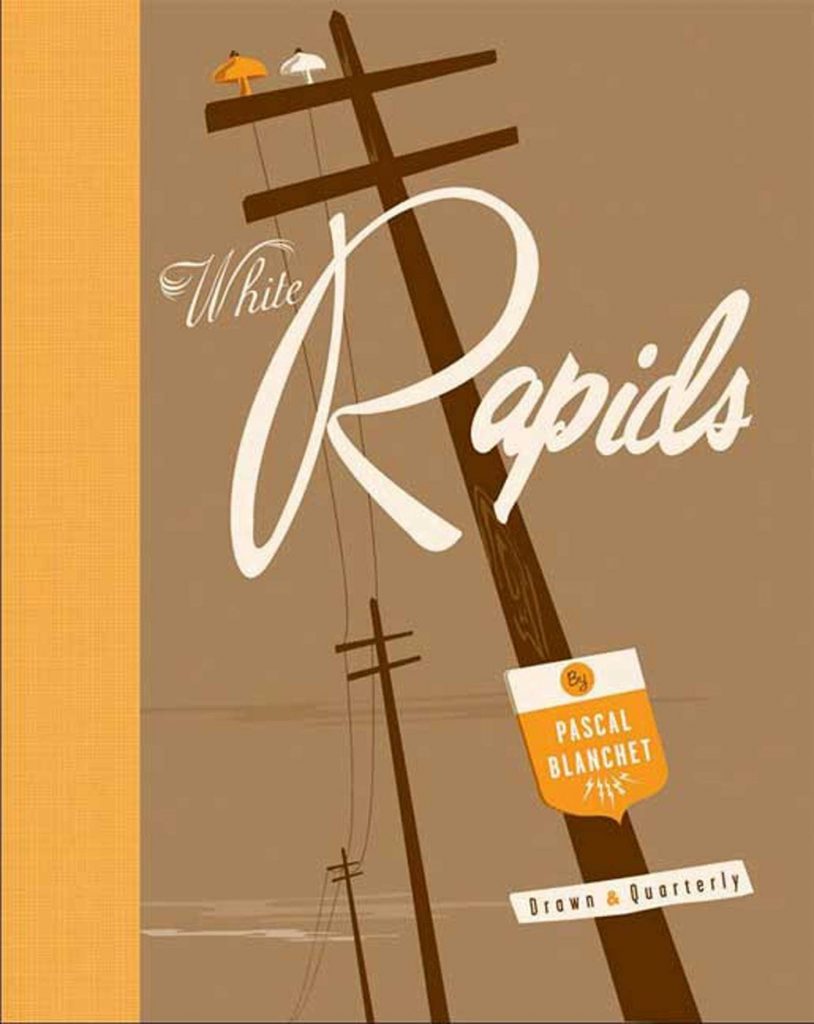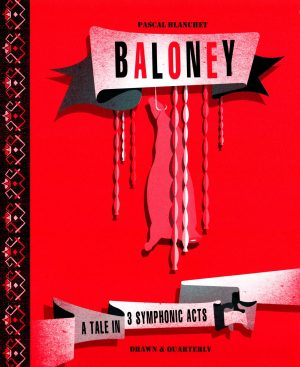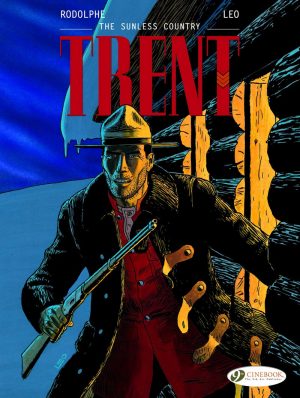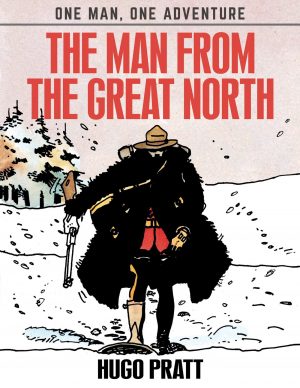Review by Win Wiacek
A fascinating moment in relatively recent social history is brought magically to life in this captivating and innovative graphic novel eschewing the traditional iconography and lexicography of sequential narrative. Instead it utilises the bold stylisations of art deco design and the gloriously folksy imagery of 1950s Modernism. Think the architecture and landscape of David Suchet’s definitive television Poirot and the movie Metropolis wedded to the crinkly curlicue characters populating the title sequences of Bewitched or Those Magnificent Men in Their Flying Machines.
The effect is like looking at a period brochure, which tragically underscores the bold and far too typical story of a town that lived and died at the behest of forces beyond the control of the everyday working stiffs who lived there.
A design tour de force, this was the first translated work of award-winning Québécois creator Pascal Blanchet who transformed the history from dry fact into a magnificent torrent of visual music.
In the 1920s, Canada’s growing power demands were supplied by private companies, and the most efficient generation method was hydroelectric, created by damming the mighty rivers of the country. In 1928 the Shawinigan Water & Power Company decided to build a new dam in a remote northern region of the St. Maurice River at Rapide Blanc, a section where the waters narrowed into the eponymous fast-running white waters of the title.
To operate a power-plant in such an inaccessible – and for nearly half of each year, actively hostile – region, a company town needed to be built for workers and their families. Moreover, for any man to bring his family into such a wilderness, it would have to be an impressive and wonderful town indeed.
Blanchet avoids the tempting option of personalising or dramatizing the tale, preferring to let mood, impression, atmosphere and style describe the birth, brief life and sad, sudden death of White Rapids. It’s a gleaming moment of Enlightened Capitalism actually doing the right and decent thing for the Proletarian Worker winked out and washed away.
This is like no other graphic novel you’ve ever seen and is stunningly effective for all that; rendered in reduced hues of orange, brown and grey, marvellously devoid of the heretofore presumed necessary clichés of narrative convention. It also avoids the dynamic seductions of Protagonist/Antagonist and the avid fetishism of Vitruvian representational faces and forms that underpin all comics art no matter how avant-garde.
This is a beautiful work and deserves every award it’s ever won as well as your rapt attention.





